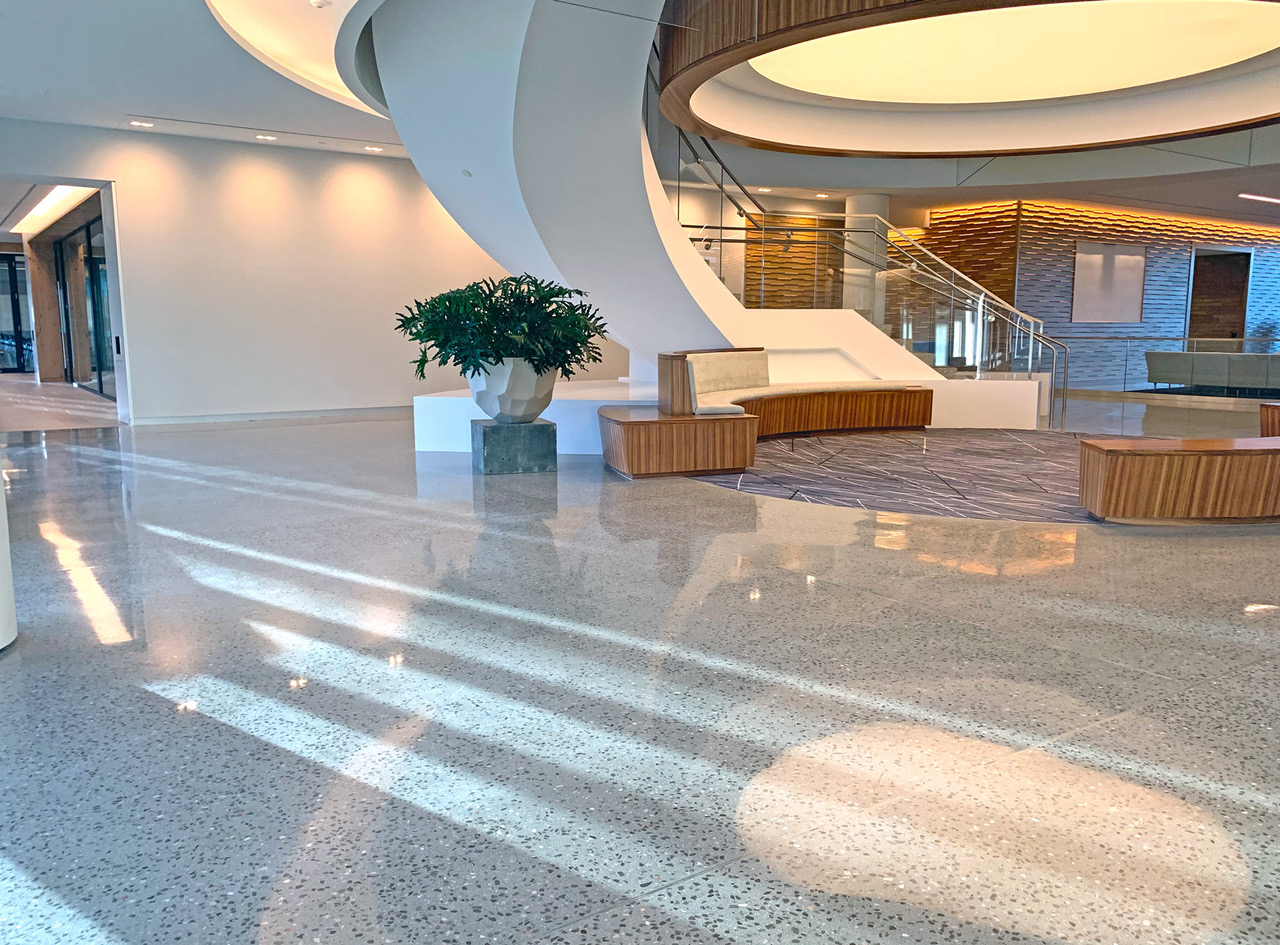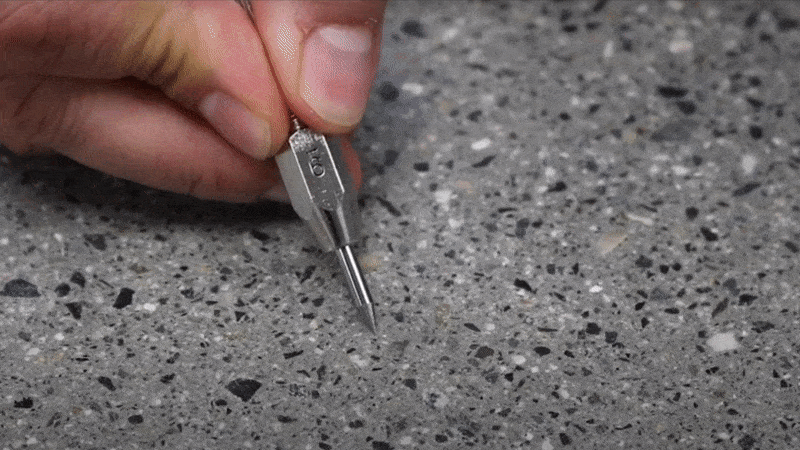
3 Ways to Cut Costs on Concrete Grinding & Polishing
As a contractor specializing in concrete grinding and polishing, striking a balance between quality work and turning a profit can be challenging. You want your clients happy because your reputation and your ability to secure future work depends on it, but you also need to make money on every job.
In this blog post, we’ll discuss three ways you can keep your costs down on your concrete grinding and polishing work and ensure each job is more profitable.
1. Determine the surface hardness before bidding on the job
Understanding the surface hardness you’re dealing with before bidding on a job is crucial. Knowing the type of concrete you’re grinding in advance will inform your tooling requirements and work expectations so you can plan effectively before getting your grinders on the ground.
Concrete for the purpose of polishing is grouped into three main categories: hard, medium and soft. We all know that concrete has a hard compressive strength, but when we refer to hard, medium, and soft concrete, we’re talking about its abrasion strength.
Knowing concrete’s abrasion strength is particularly critical because it lets us know what kinds of diamond tooling (specifically their bonds) will grind and polish a floor best.
Determining surface hardness can be pretty simple using a MOHS Hardness Scratch Test Kit. Once you’ve conducted your tests and you’re certain of the hardness level of your concrete, you can select your tooling and grind happily.

Keep in mind the principle of opposites attract, i.e., hard concrete needs a soft bond tool and soft concrete needs a hard bond.
What happens if you get this wrong?
If you have the wrong tools for the job, you’ll likely find that your diamonds won’t grind your concrete adequately because they overheat and glaze over. You’ll waste a lot of time trying to grind unsuccessfully, and your tools will wear out prematurely—costing you more money more often trying to keep up on replacements.
2. Quote accurately by calculating linear feet for edging
Edging is the number one pain point in our industry because it’s costly on time and wages and strenuous on operators. It’s also part of the quote that many contractors miss.
For example, let’s say you’re grinding a 25- x 40-foot room with a rate of removal of 100 square feet in 30 minutes. Logically, it should take you 300 minutes (or 5 hours) to complete 1000 square feet.
An inexperienced contractor might leave the quote there and not consider that in a 25- x 40-foot room, there are 130 feet of edging work you’ll have to do. If you edge at 1 foot per minute, that’s 130 extra minutes you need to add to your quote. A mistake like that will either cost you clients (and hurt your reputation) or come out of your profit if you wind up having to absorb the additional costs you misquoted.
There are other ways edging can wreak havoc on your profits, and we cover them in our guide all about the costs of edging concrete.
3. Ditch the planetary concrete grinder or use our technology in conjunction with a planetary.
If you’re going to make any headway towards profit on a concrete grinding job, you need to equip yourself with the best tools in the market.
Planetary machines tend to be heavy, bulky, and slow. Not only do they eat into your labor budget by adding to your edging time, but they also exhaust their operators, slowing things down further.
There’s also the matter of time loss and effort exerted when it comes to planetary edging. Planetary technology uses a side-to-side rocking motion that prevents the grinder from rotating at higher RPMs and grinding close to the wall. In situations where planetary grinders are the machine of choice, effectively edging a room will require an additional piece of equipment and potentially an additional operator. Either way, the costs of time and labor increase.
Watching the video above, you’ll notice a glaring difference in speed and effectiveness between a planetary grinder and an octi-disc grinder.
Set yourself up for profit and success
It’s definitely tough to make it in a competitive industry like floor surface preparation and concrete grinding.
However, doing things like getting the lay of the land (or slab) before you bid on a job, working edging costs into your quotes, and investing in the best machinery for the job, will help move the needle on your profit margins.
The only rise-and-grinding you should have to do is on the concrete you’re polishing.
Sign up to our mailing list
Keep up to date with our products, specials, trade shows and training events!